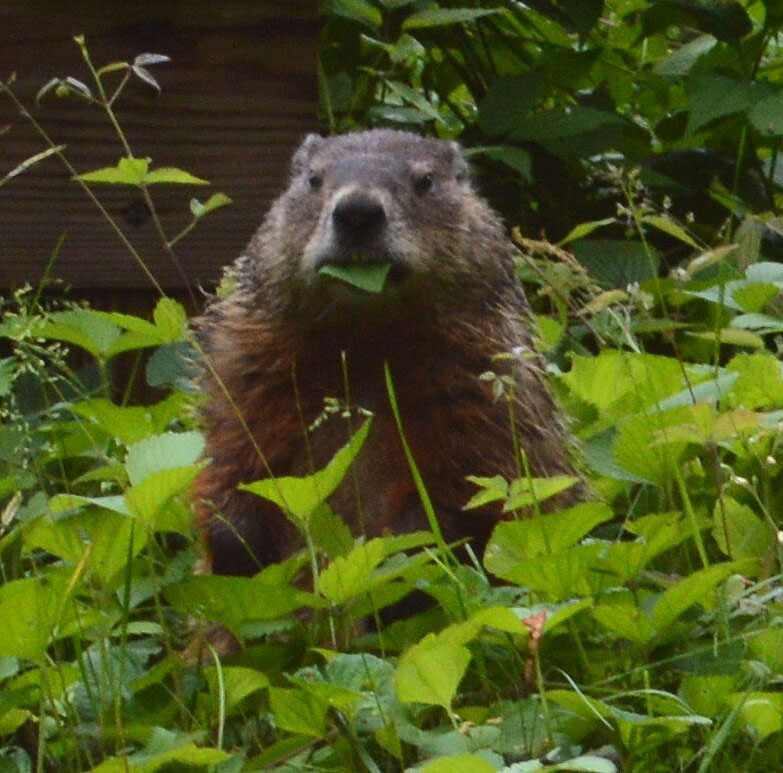
Editor’s Note: This essay is part of a series written during Railback’s stay in the park from June 22 to August 4, 2023.
I quietly stand in a corner of the main room of the Dan Lawson house on a hot afternoon in July, watching four barn swallow chicks pop their heads up from a mud nest tucked between the wall and ceiling. I come every day to observe their mother swoop in and out to feed them when human groups are not there.
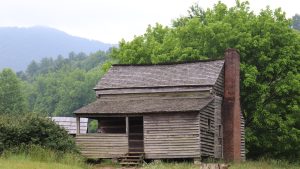
It is a great testimony to the house visitors—hundreds walking through every day—that no one disturbs this nest. One day I will find the last of the chicks has flown and the mother has gone, her exhausting mission accomplished.
One middle-aged fellow glances at the nest as he walks by.
“Barn swallows,” he says. “They are nasty pests.”
I don’t know much about barn swallows, so later I look them up and learn they are considered “pest birds,” capable of spreading diseases, damaging property, and even depressing real estate value.
Our habit as Homo sapiens is to kill or remove nuisance species, and for countless reasons many organisms on our planet make our pest list. Or even worse, they make the desirable list, and we harvest them until none are left.
Elizabeth Kolbert’s bestselling work, The Sixth Extinction, made headlines with its shocking premise that we are the cause of the latest global contraction of species numbers and diversity (now happening at frightening speed).
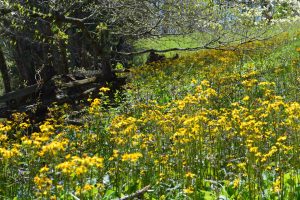
She catalogues the ways, even before recorded history, that Homo sapiens has dealt with species that threaten, annoy, or entice. We destroy habitat, bring invasive species, blunt animal travel or communication, over harvest, and cultivate useful species over nuisance ones (sheep over wolves, for example).
Kolbert’s book and others like it tend to leave us at the curb. She concludes her study with a grim prediction: “The Sixth Extinction will continue to determine the course of life long after everything people have written and painted and built has been ground into dust and giant rats have—or have not—inherited the earth.”
What can we do?
One of many important efforts in Great Smoky Mountains National Park is Discover Life in America (dlia.org). Its mission is to learn about over 60,000 organisms in the park, passing along that information to fulfil its vision of “biodiversity being conserved through an engaged community.”
The more we understand the species in the park, the more likely we will want to preserve them. As Todd Witcher, executive director of DLIA says, “you can’t protect something if you don’t know it exists!”
I am cheered by organizations such as Discover Life in America, but for years I wondered what could I do?
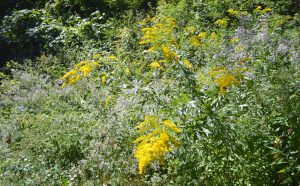
My wife and I found an answer in 2016 when we decided to convert our three acres into a certified wildlife habitat through the National Wildlife Federation (nwf.org). Among other things, we drastically reduced mowing and weed eating, quit pesticides, and decided not to adopt new dogs and cats after our old ones passed.
In a few years, the woods replaced our denuded banks and scraped lawn with fields of wildflowers and berry bushes. Bees and butterflies moved in, along with birds we had not seen before (rose-breasted grosbeaks!), chipmunks, rabbits, turkeys, deer, and (uh, oh) more snakes.
One spring a large male groundhog moved in; we named him Stumpy the Whistle Pig. He built an incredible warren of dens and tunnels over the five years he was there (we named it Fort Stumpy). He had girlfriends and together they raised chucklings. I once got into a whistling (really, chirping) contest with one. After 20 minutes I was exhausted and left the triumphant adolescent to his unending song.
We were warned by friends that groundhogs could be pests; they were known to undermine building foundations. Last year people moved into a house nearby, and one afternoon I heard gunfire there. Stumpy and his latest girlfriend were shot down.
Now the Stumpy trails have faded away, the entrances to his home glazed with spiderwebs. I wonder what he and his kind added to the ecosystem here and what price we will pay for their execution.
Like so many things in nature, the answer will sneak up on us.
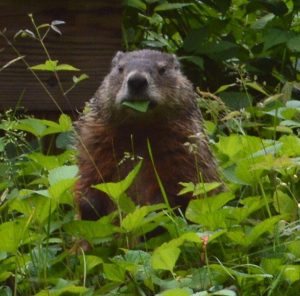
One day biking the loop road, vying for space among the line of cars, I saw Hyatt Lane was closed. I biked around the gate to get this road in Cades Cove all to myself.
About a half mile in, ahead of me to the left, the largest male black bear I’d seen in the park sat by the edge of the lane. I stopped. With the wind at my back, I arrogantly expected he would smell me and move off. He lifted his snout to the air, tracked my location, and started to amble toward me.
I slowly backed away, dropped down a hill out of his view, and fled. Then out of a tree in front of me, a cub dropped onto the gravel. Another scurried up a bank. I was stuck.
Inevitably, the mother bear climbed up on the road and headed in my direction. My bliss at having the road to myself transformed into sickening fear. I backed away, worried about the male bear behind me, but at last the sow turned and followed her cubs into the woods.
I’d ignored the closed gates—the obvious warning—to get the piece of nature I felt I deserved. I had no idea what was coming.
My face reddened as I hurried back to the loop road. To those bears, trying to enjoy the rare peace afforded by the closed lane, I was the nuisance animal.
Subscribe to get the latest posts sent to your email.
The Great Smokies Welcome Center is located on U.S. 321 in Townsend, TN, 2 miles from the west entrance to Great Smoky Mountains National Park. Visitors can get information about things to see and do in and around the national park and shop from a wide selection of books, gifts, and other Smokies merchandise. Daily, weekly, and annual parking tags for the national park are also available.